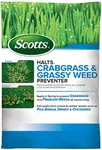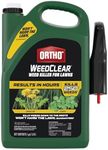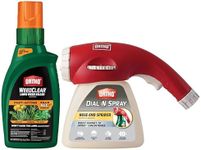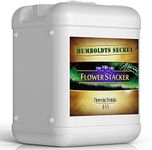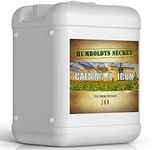Buying Guide for the Best Weed Killers For Lawns
Choosing the right weed killer for your lawn is essential to maintaining a healthy and beautiful yard. The right product will help you eliminate unwanted weeds without damaging your grass. To make an informed decision, you need to understand the key specifications and how they relate to your specific needs. Here are the main factors to consider when selecting a weed killer for your lawn.Type of Weed KillerWeed killers come in two main types: selective and non-selective. Selective weed killers target specific types of weeds without harming your grass, making them ideal for lawns. Non-selective weed killers, on the other hand, kill all vegetation they come into contact with, which is useful for clearing areas where you don't want any plants to grow. If you want to maintain a healthy lawn, a selective weed killer is usually the best choice.
Weed TypesDifferent weed killers are formulated to target different types of weeds, such as broadleaf weeds, grassy weeds, or sedges. It's important to identify the types of weeds you have in your lawn so you can choose a product that is effective against them. For example, if you have dandelions and clover, a broadleaf weed killer would be appropriate. Knowing your weed types will help you select a product that will effectively address your specific weed problems.
Application MethodWeed killers can be applied in various ways, including sprays, granules, and concentrates. Sprays are easy to apply and are great for spot treatments, while granules are spread over larger areas and are activated by watering. Concentrates need to be mixed with water and are suitable for larger lawns or severe infestations. Consider the size of your lawn and the extent of the weed problem when choosing an application method. For small areas or isolated weeds, a spray might be sufficient, whereas larger lawns might benefit from granules or concentrates.
Timing of ApplicationThe effectiveness of weed killers can depend on the timing of their application. Some products are designed for pre-emergent use, meaning they prevent weed seeds from germinating, while others are post-emergent and kill existing weeds. Pre-emergent weed killers are best applied in early spring or fall before weeds start to grow, whereas post-emergent products are used when weeds are actively growing. Understanding the growth cycle of the weeds in your lawn will help you choose the right timing for application.
Safety and Environmental ImpactIt's important to consider the safety of the weed killer for both humans and pets, as well as its environmental impact. Some products contain chemicals that can be harmful if ingested or if they run off into water sources. Look for weed killers that are labeled as safe for use around children and pets, and consider organic or natural options if you are concerned about environmental impact. Reading the product label and safety instructions will help you make a responsible choice.
Persistence and Residual EffectsSome weed killers have long-lasting effects, meaning they continue to prevent weed growth for an extended period after application. Others break down more quickly and may require more frequent applications. If you prefer a low-maintenance approach, a product with longer persistence might be more suitable. However, if you are concerned about potential damage to your lawn or surrounding plants, a product with shorter residual effects might be a better choice. Consider how much time and effort you are willing to invest in weed control when making your decision.

